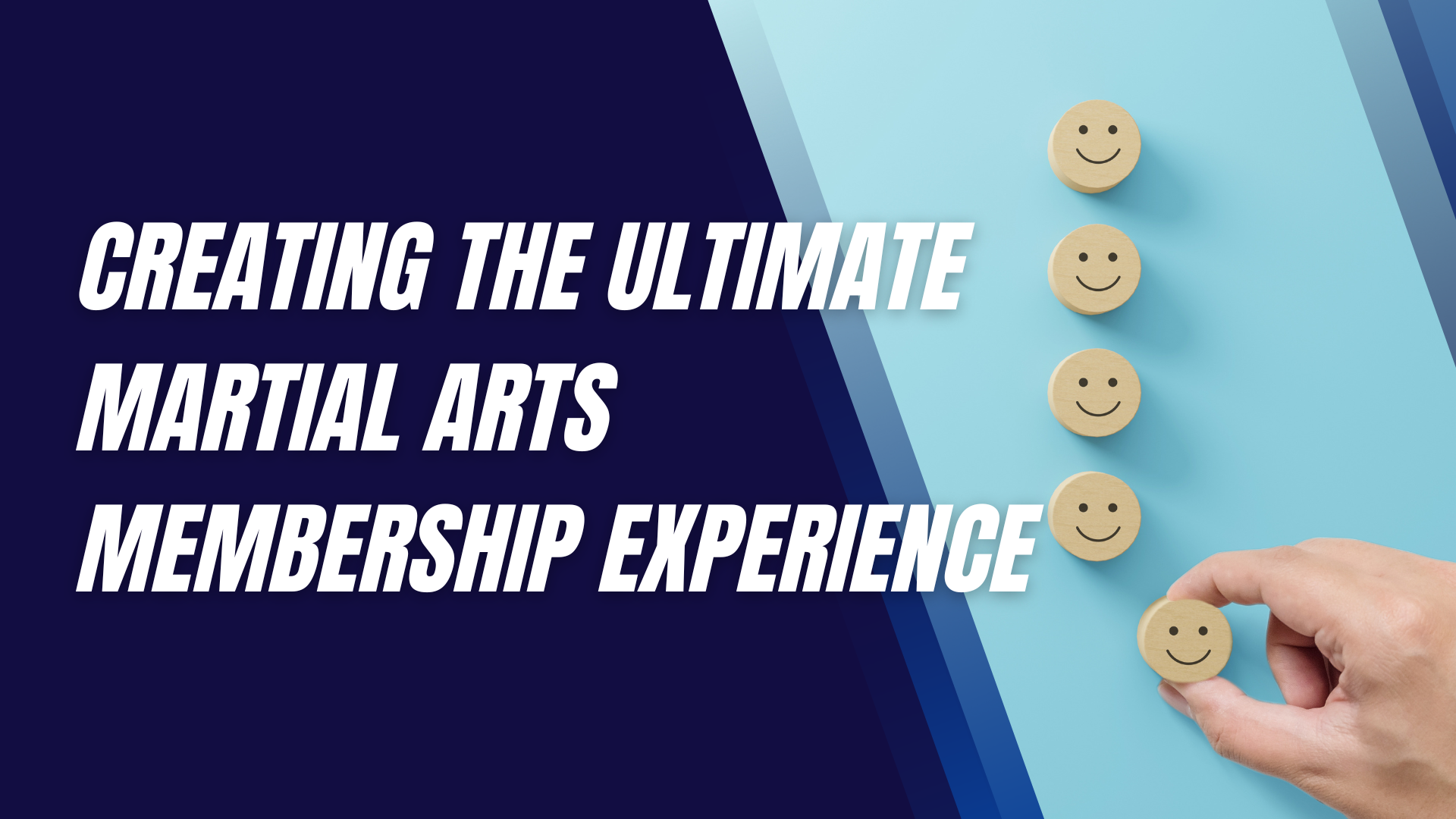How to Develop Consistent Habits in Martial Arts Training
Martial arts is much more than just physical training—it's a journey that requires mental fortitude, discipline, and, most importantly, consistency.
Whether you're a beginner or a seasoned practitioner, developing consistent habits in your martial arts training is essential to achieve long-term success. But how do you create habits that stick? Let's dive into the steps you can take to develop and maintain these habits effectively.
Understanding the Foundation
What Are Habits?
Habits are behaviors we repeat regularly, often without much thought, making them an integral part of our daily routines. In the context of martial arts, habits are the small, consistent actions that contribute to your overall progress, whether it's showing up to class, practicing techniques at home, or maintaining a healthy diet.
The Role of Discipline in Habit Formation
Discipline is the backbone of habit formation. Without discipline, even the best intentions can fall by the wayside. In martial arts, discipline means pushing through the days when motivation is low, showing up when you'd rather skip, and focusing on the long-term benefits rather than immediate comfort.
How Habits Influence Martial Arts Progress
Your habits directly impact your progress in martial arts. Good habits lead to steady improvement, while bad habits can hinder your growth. By establishing positive routines, such as regular training, proper nutrition, and adequate rest, you're setting yourself up for success.
Setting Clear Goals
Defining Your Martial Arts Objectives
Before you can develop consistent habits, you need to know what you're working towards. What are your goals in martial arts? Are you aiming for a black belt, preparing for a competition, or simply looking to improve your fitness? Defining your objectives will give you a clear direction and purpose.
The SMART Goals Framework
Using the SMART framework—Specific, Measurable, Achievable, Relevant, and Time-bound—can help you set goals that are realistic and attainable. For example, instead of saying, "I want to get better at sparring," you might set a SMART goal like, "I will improve my sparring skills by practicing twice a week for 30 minutes over the next three months."
Aligning Goals with Long-Term Vision
While short-term goals are important, it's equally crucial to align them with your long-term vision. This ensures that the habits you're forming now will support your broader ambitions in martial arts, whether that's achieving mastery or simply enjoying the practice for years to come.
Creating a Training Schedule
Importance of a Structured Routine
A structured routine is key to developing consistent habits. By scheduling your training sessions in advance, you eliminate the need to decide whether or not to train each day—it's already on your calendar. This reduces decision fatigue and helps you stay on track.
Balancing Martial Arts with Other Life Commitments
Life is busy, and finding time for martial arts can be challenging. The key is balance. Prioritize your training without neglecting other important areas of your life, such as work, family, and rest. Remember, it's about consistent effort over time, not burning out by doing too much too soon.
Tips for Sticking to Your Training Schedule
Sticking to a training schedule can be tough, especially when life gets hectic. One effective strategy is to treat your training like an appointment you can't miss. Additionally, having a training partner or joining a regular class can provide the accountability you need to stay consistent.
Starting Small: Building Simple Habits First
The Power of Micro-Habits
When it comes to habit formation, starting small can be incredibly powerful. Micro-habits are tiny actions that are easy to incorporate into your daily routine. Over time, these small actions can snowball into significant progress. For instance, committing to five minutes of stretching each morning can gradually lead to a full warm-up routine.
Examples of Small Habits in Martial Arts Training
Examples of small, manageable habits include practicing a specific technique for 10 minutes daily, doing a quick mental review of techniques before bed, or incorporating a brief meditation session into your day to improve focus. These small steps can build a solid foundation for more complex habits.
Gradually Increasing Complexity
As you become comfortable with your micro-habits, you can gradually increase their complexity. For example, after consistently practicing basic strikes or movements, you might extend your practice time or add more advanced techniques to your routine.
Accountability and Tracking Progress
Using Journals or Apps to Track Habits
Tracking your habits is crucial for staying consistent. Keeping a journal where you log your training sessions, techniques practiced, and any observations can provide valuable insights. Alternatively, there are apps designed to help you track habits and stay motivated.
The Role of Instructors and Training Partners in Accountability
Accountability from others can be a powerful motivator. Instructors can provide guidance and encouragement, while training partners can keep you accountable and make training more enjoyable. Sharing your goals with someone you trust can also help you stay on track.
Celebrating Small Wins to Stay Motivated
Recognizing and celebrating your progress, no matter how small, is vital for maintaining motivation. Whether it's mastering a new technique, hitting a milestone in your training schedule, or simply showing up consistently, acknowledging your achievements can keep you motivated to continue.
The Role of Mindset in Habit Formation
Developing a Growth Mindset
A growth mindset—the belief that you can improve through effort and learning—is essential for developing consistent habits in martial arts. Embrace challenges, learn from setbacks, and view every training session as an opportunity to grow.
Overcoming Mental Barriers
Mental barriers, such as self-doubt or fear of failure, can hinder habit formation. To overcome these, practice positive self-talk, set realistic expectations, and focus on the progress you've made rather than perfection.
The Importance of Patience and Perseverance
Habit formation takes time. It's important to be patient with yourself and persevere, even when progress seems slow. Remember that every step, no matter how small, brings you closer to your goals.
Overcoming Common Challenges
Dealing with Plateaus in Training
Plateaus are a natural part of the martial arts journey. When progress stalls, it can be frustrating, but it's important to stay consistent. Use plateaus as an opportunity to refine your technique, focus on other areas of training, or simply give your body a break.
How to Handle Injuries Without Losing Momentum
Injuries are another common challenge in martial arts. While it's important to rest and recover, you can maintain your training habits by focusing on other aspects of martial arts, such as studying techniques, watching instructional videos, or practicing mental rehearsal.
Managing Time and Energy Effectively
Effective time and energy management are crucial for maintaining consistent habits. Prioritize your training sessions, get adequate sleep, and ensure your nutrition supports your energy levels. It's also important to listen to your body and avoid overtraining.
The Importance of Rest and Recovery
How Rest Impacts Habit Formation
Rest is often overlooked but is crucial for habit formation. Without adequate rest, both your body and mind can become fatigued, making it harder to maintain consistency. Incorporating rest days into your training schedule is essential for long-term success.
Incorporating Recovery Habits into Your Routine
Recovery habits, such as stretching, foam rolling, and getting enough sleep, should be an integral part of your martial arts routine. These habits not only prevent injuries but also ensure that you're physically and mentally ready for your next training session.
The Balance Between Training and Rest
Finding the right balance between training and rest is key to developing consistent habits. While it's important to train regularly, overtraining can lead to burnout and injury. Listen to your body, and don't be afraid to take a day off when needed.
Nutrition and Its Impact on Habits
How Diet Supports Consistent Training
What you eat directly affects your energy levels and performance in martial arts. A balanced diet that includes the right mix of carbohydrates, proteins, and fats can help you sustain your energy during training and support recovery afterward.
Creating Healthy Eating Habits
Healthy eating habits, such as meal prepping, staying hydrated, and choosing whole foods over processed ones, can make a big difference in your martial arts journey. These habits ensure that you're fueling your body properly for consistent training.
Supplementing for Optimal Performance
In some cases, supplements like protein powders, vitamins, or electrolytes can support your nutrition and help you maintain consistent training habits. However, it's important to consult with a nutritionist or healthcare provider before starting any new supplement regimen.
Staying Motivated Long-Term
Finding Your “Why” in Martial Arts
Understanding your "why"—the deeper reason behind why you practice martial arts—can help you stay motivated in the long run. Whether it's self-improvement, stress relief, or the pursuit of mastery, keeping your "why" in mind can keep you focused and driven.
Mixing Up Training to Avoid Burnout
Variety is key to avoiding burnout. Mixing up your training by exploring different techniques, sparring with new partners, or even trying a different martial art can keep things fresh and exciting.
The Role of Martial Arts Community in Sustaining Motivation
Being part of a martial arts community provides support, encouragement, and accountability. Training with others who share your passion can be incredibly motivating and can help you stay committed to your habits over time.
Adapting Habits to Different Martial Arts Disciplines
Tailoring Habits for Different Styles (e.g., Karate, BJJ, Muay Thai)
Each martial art discipline has its own unique demands, and your habits should reflect that. For example, the habits you develop for Brazilian Jiu-Jitsu (BJJ) might focus more on flexibility and ground techniques, while Muay Thai habits might emphasize striking and conditioning.
Understanding the Unique Demands of Each Discipline
Understanding the specific requirements of your martial art can help you tailor your habits effectively. For instance, if you're practicing a striking art like Taekwondo, you might focus on speed drills, whereas a grappling art like Judo might require more time spent on strength training.
Examples of Discipline-Specific Habits
Discipline-specific habits might include daily footwork drills for boxing, consistent stretching for high kicks in Taekwondo, or regular sparring sessions for BJJ. Tailoring your habits to the demands of your discipline ensures that you're developing the right skills.
The Role of Visualization and Mental Rehearsal
Incorporating Visualization Techniques into Your Routine
Visualization is a powerful tool in martial arts training. By mentally rehearsing techniques, movements, and even entire matches, you can improve your performance and build confidence. Incorporating visualization into your daily routine can reinforce the physical training you do.
How Mental Rehearsal Enhances Physical Training
Mental rehearsal allows you to practice techniques in your mind, which has been shown to improve physical performance. This technique is particularly useful when you're unable to train physically due to time constraints or injury.
Practical Steps for Effective Visualization
To effectively incorporate visualization, find a quiet space, close your eyes, and imagine yourself performing a technique or sequence perfectly. Focus on every detail, from the movements to the sensations. Doing this regularly can significantly enhance your physical training.
Long-Term Growth and Continuous Improvement
The Concept of Kaizen in Martial Arts
Kaizen, the Japanese philosophy of continuous improvement, is particularly relevant in martial arts. It encourages you to focus on making small, incremental improvements each day, which over time lead to significant progress.
Adapting Habits as You Progress
As you advance in your martial arts journey, your habits should evolve. What worked as a beginner may need to be adjusted as you become more skilled. Regularly reassessing and adapting your habits ensures that they continue to serve your goals.
Fostering a Lifelong Love for Learning and Training
Ultimately, the key to long-term success in martial arts is a love for learning and training. Cultivating curiosity, staying open to new techniques and ideas, and maintaining a positive attitude will keep you engaged and passionate about your practice for life.
Final Thoughts
Developing consistent habits in martial arts training is a journey that requires patience, discipline, and a growth mindset. Start small, set clear goals, and gradually build up your habits over time. Remember, every small step you take brings you closer to mastery. Stay motivated, adapt as needed, and most importantly, enjoy the process. Your martial arts journey is not just about the destination but also the habits you build along the way.
Interested in trying a martial arts class? Find an affiliated academy anywhere in the country by clicking here.
Have your own martial arts program? Get to know more about what we have to offer at Ground Standard Agency for helping martial arts businesses grow.
Email us at info@groundstandard.com, or call and text us at (732) 907-8920 today to learn how to start growing your own academy, school, dojo, or gym with us as well.
Share this article












